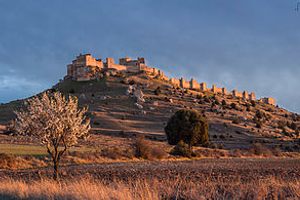About
During the Iron Age, what is now the Tiermes Archaeological Site was a Celtiberian hill fort that was initially capable of resisting an assault by the Roman invaders.
The tribe occupying the site were allied to the Numantia tribe during the second century BC. In 98 BC, with the Numantia already overcome, Tiermes was captured by Roman consul Titus Didius, beginning the slow but sure Romanisation of Tiermes.
The urbanization of the area accelerated around 70 BC, and by the end of the first century, the city reached the height of its splendor. As you can see at the site today, it once boasted large public buildings, two fora, an aqueduct, and extensive urban development. Uniquely, these buildings were carved directly into the sandstone bluffs—an earlier Celtiberian practice but with Roman architecture covering the open frontages.
A city wall was later built, and Tiermes remained in use until the 4th century after the decline of the Western Roman Empire. Today a number of archaeological remains can be seen, including an amazing water supply system that would have been capable of carrying 71 liters per second. There is also a small number of archaeological artifacts from the Visigoth and Muslim periods of the site that followed the Roman occupation.
Related Tags
Know Before You Go
Open daily from 10 a.m. until dark. There is also an on-site museum, closed Mondays. Guided tours can be booked by phone via the number on the museum website.
Published
July 23, 2019































